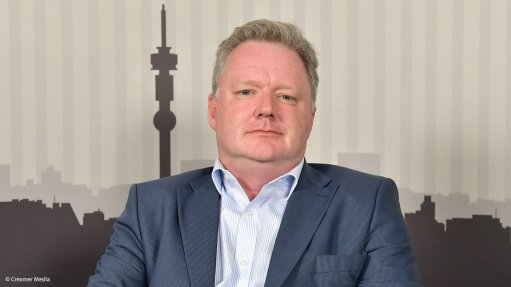
SEAN BENNETT Kore used the quarter ended March 31 to start the process of optimising the capital and operating expenditure estimates, execution schedule and the final designs
Photo by: Dylan Slater
JOHANNESBURG (miningweekly.com) – Potash exploration and development company Kore Potash, headed by CEO Sean Bennett, continues to make progress with the definitive feasibility study (DFS) for its flagship 97%-owned Sintoukola (Kola) Potash project, in the Republic of Congo (RoC).
The DFS, which is being undertaken by a French consortium, has moved from design engineering to estimating final construction costs and the execution schedule.
Kore used the quarter ended March 31 to start the process of optimising the capital and operating expenditure estimates, execution schedule and the final designs.
The DFS schedule was slightly revised, owing to additional redesign work related to further optimisation of the flotation area of the process plant.
Third-party testing of the optimised designs have been completed with results supporting an improved recovery from the prefeasibility study.
Further, the final test results for the optimised float circuit have been received and they have shown positive results that support the inclusion of the optimisations in the DFS. The company expects to publish the final results of the DFS by the third quarter.
Meanwhile, the procurement process is nearing completion, with most packages finalised for the DFS. The issuance of the final material off-take agreements has begun.
Final report writing is under way, with draft documents expected in the second quarter.
The shaft design has also been finalised. The Kola deposit will be accessed by two 7-m-diameter shafts with depths of about 260 m. The intake shaft will include a man and material cage, while the exhaust shaft will be equipped with a pocket belt ore hoisting system.
The hydrogeological testing and modelling are complete, so too are the detailed engineering designs of underground facilities.